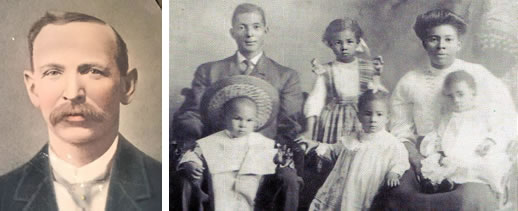

Share
In 1898, laying of the cornerstone of the Minnesota State Capitol began with pomp and circumstance – but little attention to the hundreds of workers who would make it happen. This Sunday, 112 years after the building’s 1905 completion, scores of descendants will gather to commemorate the contributions of the Capitol builders.
They include relatives of Swiss-born stonecutter John Kuettel, who are using the occasion for a family reunion. And relatives of Casiville Bullard, the son of slaves, who may be the best known of the workers.
A three-day, public celebration begins Friday to mark the grand opening of the newly-restored building. On Sunday, the focus will be on the builders – past and present.
At 2:30 p.m. Sunday, by the basement L’Etoile du Nord Vault (Room B-15), a plaque will be dedicated to memorialize workers who built the statehouse, especially the six who died in the original construction: Felix Arthur, John Biersack, John Corrigan, Alfred Magnuson, Albert Swanson and Florian Zauner.
These workers and more than 620 others were identified by researchers for the project, “Who Built Our Capitol?” The research project, including a documentary film, was coordinated by the University of Minnesota Labor Education Service.
Immediately after the official plaque ceremony, between 3 and 4 p.m., in B-15, the Labor Education Service will host a social gathering for the descendants.
At 3 p.m. on the south lawn by the main entrance, the workers who performed the recent restoration of the Capitol will be recognized and an ice cream social will be hosted, courtesy of Minnesota Building Trades unions. Hundreds of people are expected.
Descendants of the builders will stand out because they will sport special “Family” buttons distributed by the Labor Education Service at the event. In addition, more than 50 members of John Kuettel’s family will be wearing t-shirts featuring his picture on the back and an image of the Capitol on the front.
“When we were growing up, my dad used to say, ‘I think great-grandpa John worked on the Capitol,” said Kuettel’s great-granddaughter, Jackie Sheehan. But she didn’t know for sure until two months ago, when on a tour of the building she came across a brochure about the Who Built Our Capitol? project. She was delighted to see John Kuettel listed among the workers on the website.
“I almost cried, I was so excited,” she said. “Immediately I started trying to find family members descended from each of [Kuettel’s] five children. We’ll have 70 – 80 people together this weekend because of that” for a reunion at the family farm in Farmington. Attendees will include many relatives she has never met.
“I am so grateful to the people who took the time to do the research” on the Capitol builders, Sheehan said.
Jerry Blakey and members of his family also plan to attend Sunday’s commemoration. His grandfather, Casiville Bullard, may be the best known of the state Capitol workers.
The son of slaves and one of only a handful of African-American bricklayers and stone masons in St. Paul in the early 1900s, Bullard worked on numerous high-profile projects in addition to the state Capitol, including St. Paul City Hall, the Cathedral of St. Paul, the Union Depot and the Highland Park Water Tower, among others.
“There’s been a lot of publicity about him over the years,” Blakey said, noting that his mother researched Bullard’s life and often talked about him.
But the significance of his grandfather’s contributions really sunk in, Blakey said, when he was elected to the St. Paul City Council in 1993.
“I was in a building that my grandfather had worked on,” Blakey recalled. “That really anchored it for me.”
The state Capitol “is a national treasure,” he said. “I feel I have the responsibility to be there Sunday and … appreciate not only my grandfather but everyone else who worked on the building.”
For more information, visit the Who Built Our Capitol? website. Throughout the three-day celebration, the documentary “Who Built Our Capitol?” will be screened, together with a display profiling seven of the workers who constructed the statehouse.

